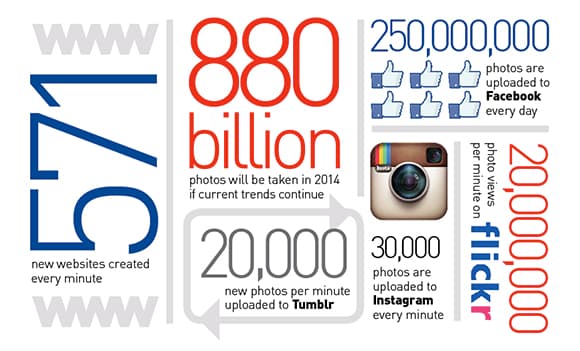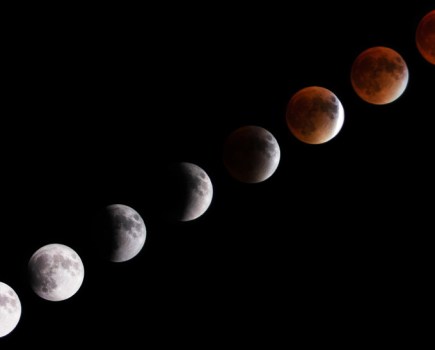Sites such as Flickr and Facebook not only help you share your photos online with a wider audience, but they can also make you a better photographer, as Debbi Allen sets out to prove
Many of us now share our images online. With the advent of digital photography a new and exciting phase began, with hundreds or even thousands of photographs being taken, whereas in the past just 24 or 36 may have sufficed.
Alongside the explosion of digital photography has come the desire to share our photos with a wider community than was previously possible. Flickr, Facebook, Instagram and other such sites have experienced unheard of growth in the past few years. Recent figures state that nearly 30,000 photographs are uploaded to Instagram and more than 200,000 images are uploaded to Facebook every minute.
However, with millions of photographs being uploaded to various sites every day, how can you use the web to get your images seen by those who matter, and to actually use the experience to help you become a better photographer?
Where to share your photos online?
 You only need to look at the numbers to know that most people – and I have been guilty of this – turn first to Facebook to share photos online. It’s quick and convenient, and most friends and family have usually signed up so you can ensure that the right people see your treasured memories.
You only need to look at the numbers to know that most people – and I have been guilty of this – turn first to Facebook to share photos online. It’s quick and convenient, and most friends and family have usually signed up so you can ensure that the right people see your treasured memories.
However, this is the limit of what Facebook offers. For instance, there’s no option to store high-resolution back-up images or to print your photos directly. For these ‘added extras’ you need to turn your sights to other, dedicated photo-storage and sharing sites that offer robust organisational tools, editing options and much more.
When I started this article, I thought I would list some of the bigger names – Facebook, Flickr and so on – but a little research soon turned up hundreds of options from which photographers can choose. Depending on your needs, you can soon start to filter the good from the bad.
Flickr, for instance, gives you the option to share Exif data and geotags. You also get statistics on your photos and can see how each image is received – although as yet there is no support for raw files.
Alternatively, Photobucket offers a great level of social interaction, meaning that through this site you can, for instance, share photos with Facebook, while Snapfish gives users the ability to access full-resolution versions of their images from anywhere. Picasa is pretty good, too, with a desktop application for organising your images a great addition.
So with such choice, how do you decide where to display your photos?

Do it yourself
These pre-made sites aren’t your only option. You can also create and host your own website, where you can share photos, blogs and other snippets with the world.
WordPress, and others, make it extremely easy and cheap (there are free options) to create and customise your own photographic website. WordPress states that 100,000 new sites are created with them every day, and it’s easy to see why. You can create your own website in a matter of minutes for free. Even if you want to customise your site, you can still have it up and running with little time or money spent on your part.
There are also sites like the Amateur Photographer Gallery, where you might find fewer images but most will have been posted by passionate photographers rather than by teenagers and their friends.
The counter-argument to any of these options is that in order to get your website seen by the vast numbers that established websites can provide, you need to market it – and that means making use of the high-profile sites.
‘I have my own Zenfolio website,’ says photographer Drew Senter, ‘but find that more people contact me about my photos through my Flickr or Facebook stream (Longleaf.photography). I have found Flickr to be the best tool thus far for marketing my images to a wide audience.’
How to get started
So how can you use the power of these social sites without drowning in the sheer wealth of photos?
First, they’re great places to give and receive feedback about your images. Although not all of it will be useful – you’ll probably get your fair share of ‘Nice pic, mate!’ – some will provide genuinely useful critiques. AP Gallery member Catriona explains: ‘I have found three groups on Flickr that provide excellent feedback. One is Photography Critique, which has been going for years. The second is Photography Critique Assignments (PCA), which challenges you to produce something on a fortnightly basis. This group pulled me up for not thinking enough about what images I was taking, so I had to really concentrate on it – and on iconic photographers as well, when we used to have a monthly Emulation assignment (I miss those). The other group is Photography Critique Discussions, where photographic matters can be discussed. This can be very good as well.’
It’s not just feedback that can help you improve your photography, though. One of the best things about these social sharing sites is the amount of information they generate. When users upload photos or videos, they keyword and tag their entries, creating ‘clouds’ of data of what photographs are currently ‘trending’.
By using these word clouds, you can see what photos are popular – for instance, seasonally appropriate events such as summer, beach, holiday and so on. You can then tailor your photography uploads to match the trends.
You can also use these word clouds to find out if there are any gaps in the market. Are there any subjects out there that haven’t been covered? What images are people searching for and can’t find? Can you produce photographs to fill that gap and carve out your own niche (or at least get your images up their first).
Final thought
So, can Flickr help you develop as a photographer? Is this where talent can be found and how you could get ‘spotted’? ‘I think so, yes,’ says Drew Senter. ‘By being savvy about the way in which we use the internet to display our photos, we can be sure that not only will more people see our images than ever before, but also that we can become better photographers in the process.’
However, Drew has a few words of advice: ‘I have found that the downside to using sites like Flickr is that I have had several images stolen and used without my consent.’ If you decide to share your images online, don’t forget to protect your photos first.
Your rights on photo sites
There has been a lot of coverage recently about your rights when photographs are uploaded to social networking sites. Taking Facebook as an example, its terms of use state that any picture uploaded grants Facebook the right to have a non-exclusive, royalty-free licence to use it.
Although Facebook claims that the licence or sublicence does not affect ownership or copyright privileges for material on the site, it’s worth noting that metadata is stripped out of images when uploaded to Facebook. This means that non-visible watermarks are stripped out, creating ‘orphan works’ unless you have watermarked it visibly, too. All sites have different terms of usage, so it’s worth checking each one before you upload.







